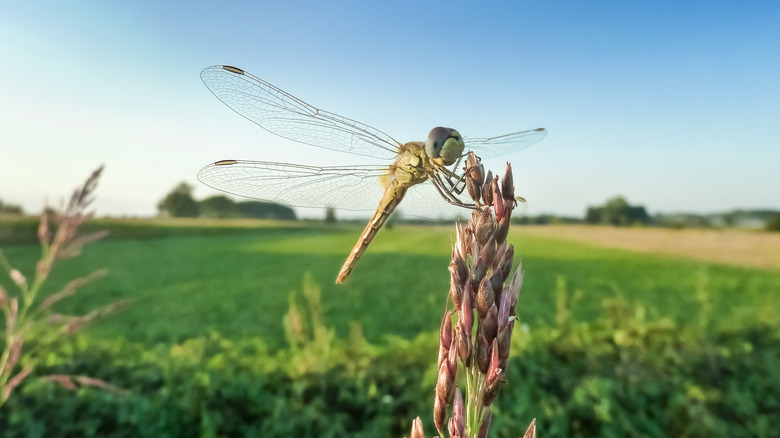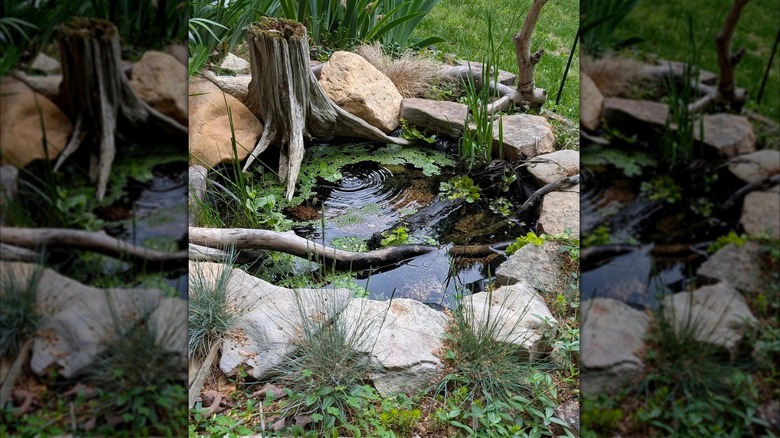The Very Best Way To Ensure Dragonflies Return To Your Yard Every Year
Mosquitoes ruin everything. You step outside on a summer evening and all you end up doing is swatting, running around putting mosquito repellent patches on your kids, or finally just heading back in. But those are not ultimate solutions. What you need is a predator and there is nothing better than a dragonfly. Did you know dragonflies can hunt up to 100 mosquitoes in a single day? So, if you want them to keep coming back year after year, you need to turn your garden into a dragonfly habitat with a simple addition of a clean water feature.
If your idea of a dragonfly-friendly habitat is manicured lawns and crystal clear fountains, then you need to rethink. Dragonflies lay eggs in freshwater, preferably still water, and their larvae or naiads live underwater for months or even years (depending on the species) before taking flight. With a huge part of their lives spent underwater or around water, the only way to make sure they come back, not just for this summer, but every summer after, is a devoted water source in your backyard. Just a shallow pond or seasonal puddle will not work.
You need a permanent setup that can withstand temperature swings and freezing. Start by digging a hole with good depth — about 60 centimeters (or 24 inches). A container that size may also work, so long as you create shallow edges for the larvae to emerge and the adults to lay eggs. Fill this area with clear water, and don't add any fish, as they eat the larvae. Consider installing some plants to attract dazzling dragonflies to your garden. Think Siberian irises (Iris sibirica) or yarrow (Achillea millefolium) — something bright and spiky. You can also line the hole with rocks or pebbles, so the dragonflies can perch easily.
The overlooked details that make dragonflies return year after year
If you already have a water source and still see no dragonflies, then maybe it's time to look at the surroundings. A beautifully set-up lawn with a simple pool might not cut it. In fact, Jessica Ware, curator of the American Museum of Natural History, told Martha Stewart that "Dragonflies don't thrive in monoculture grass yards." They are top predators, and need variety. Create a yard that has different types of flowers that attract pests and small insects that dragonflies feed on, and add places for them to rest and hunt. With the addition of so many plants and flowers, it's normal that your pond may not stay clean. Don't panic if that happens. Fallen leaves, algae, or even pond snails are, in fact, good news.
If the space is a little messy, it will give the dragonfly larvae a place to hide from predators and survive until they are ready to emerge. Now, if you have gone through all of this effort, don't let things like chlorine or pest control sprays ruin the ecosystem. Naiads are sensitive, thus, any trace of chemicals in water can kill them or stop their development. If you're worried about your pond attracting mosquitoes, fear not! Dragonfly nymphs feast on mosquito larvae. Maintain the oxygen in the water by growing suitable types of aquatic plants, such as elodea or hornwort. And most importantly, ensure there is plenty of sun exposure. Dragonflies love the sun and need it to warm up for flight, so pick a spot that gets a lot of rays. Remember: No water, no naiads, and no naiads, no dragonflies. It's that simple.

